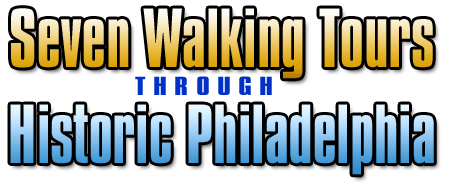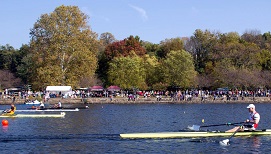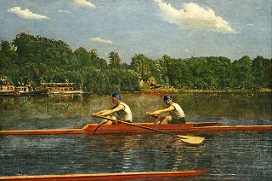Welcome to Fairmount Park
Few cities anywhere can match the sylvan beauty on the banks of the Schuyllkill River known as Fairmount Park, which occupies 2,052 acres along the east and west banks of the Schuyllkill. We can walk, bicycle, rollerblade, or drive along Kelly and West River Drives today and feel ourselves deep in the country. In the depths of the Wissahickon Ravine and at other points in the park, the city's tall buildings are not visible over the treetops, and if it were not for the hum of traffic, we could be in the pastoral world that Thomas Eakins painted.
It was Eakins who immortalized the scullers on the Schuylkill — some of these paintings such as "The Biglen Brothers Practicing" are exhibited today at the Philadelphia Museum of Art. The "Mount" for which the park was named is the rise on which the museum stands.
Fairmount Park was the site of the Centennial Exposition of 1876, and several buildings from that earlier fair still stand, notably Memorial Hall. One of the world's largest municipal parks, Fairmount contains several million trees; the oldest zoo in the U.S.; Boathouse Row; cherry blossoms to rival those along D.C.'s Potomac Basin; Robin Hood Dell, an outdoor venue for soul-filled summer singers; the Mann Music Center, the Philadelphia Orchestra's (and others') summer amphitheater; picnic areas; tennis courts; miles of bicycle paths; bridle paths; an azalea garden; hundreds of statues and monuments; and two dozen or so 18th- and 19th-century buildings, which comprise an unusual historical patrimony.
Fairmount Park
- Welcome to Fairmount Park
- Joan of Ark
- Fountain of the Sea Horses
- John Paul Jones
- Waterworks
- Lincoln Monument
- Lemon Hill
- Boathouse Row
- Icelandic Sculpture
- Garfield by Saint-Gaudens
- Samuel Memorial
- Playing Angels statue
- Grant Statue
- Mount Pleasant
- Remington's Cowboy
- Smith Playground
- Woodford
- Strawberry Mansion
- Laurel Hill Cemetery
- Zoo
- Sweetbriar
- Cedar Grove
- Memorial Hall
- Smith Civil War Memorial
- Japanese House (Shofuso)




